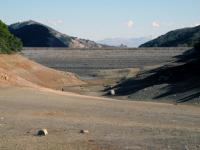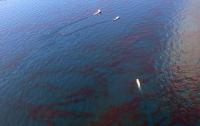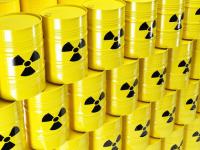-
Even if the Paris Agreement is implemented, food and water supplies remain at risk
If all pledges made in last December’s Paris climate agreement (COP21) to curb greenhouse gases are carried out to the end of the century, then risks still remain for staple crops in major “breadbasket” regions and water supplies upon which most of the world’s population depend. Recognizing that national commitments made in Paris to reduce greenhouse gas emissions fall far short of COP21’s overarching climate target — to limit the rise, since preindustrial times, in the Earth’s mean surface temperature to 2 degrees Celsius by 2100 — a new report advances a set of emissions scenarios that are consistent with achieving that goal.
-
-
Coal's decline driven by technology, market forces – not policy
Many people – and many politicians — attribute coal’s decline to the clean-air policies of the federal Environmental Protection Agency (EPA) through rules that the agency applied to electricity generation plants. A new study points out that largely because of court challenges, EPA clean-air regulations did not change until 2015 — twenty-five years after President G. H. W. Bush signed amendments to the Clean Air Act in 1980. For eighteen years following new EPA rules, coal continued to thrive — until 2008, when its production peaked and then declined 23 percent in the next seven years. The study found that the decline is correlated with the shale revolution that began to be fully felt in 2007-2008, after which cheap natural gas outcompeted coal markedly.
-
-
Coal's decline driven by technology, market forces – not policy
Many people – and many politicians — attribute coal’s decline to the clean-air policies of the federal Environmental Protection Agency (EPA) through rules that the agency applied to electricity generation plants. A new study points out that largely because of court challenges, EPA clean-air regulations did not change until 2015 — twenty-five years after President G. H. W. Bush signed amendments to the Clean Air Act in 1980. For eighteen years following new EPA rules, coal continued to thrive — until 2008, when its production peaked and then declined 23 percent in the next seven years. The study found that the decline is correlated with the shale revolution that began to be fully felt in 2007-2008, after which cheap natural gas outcompeted coal markedly.
-
-
S&T, NASA show online tool to help prepare for solar storms
When solar storms release solar flares and coronal mass ejections (CME) toward Earth, we can feel the effects here on the ground. They can interfere with Earth’s magnetic field and produce geo-magnetically induced currents. These currents impact our electric grid and can cause permanent damage to critical grid components, including high-voltage transformers. While we cannot stop solar storms and CMEs, we can mitigate their effect on the electric grid.
-
-
New $4 million facility at UW to investigate natural disasters worldwide
A new Post-Disaster, Rapid Response Research Facility at the University of Washington will provide necessary instrumentation and tools to collect and assess critical post-disaster data, with the goal of reducing physical damage and socio-economic losses from future events. The NSF’s $40 million NHERI investment, announced in September 2015, funds a network of shared research centers and resources at various universities across the nation. The goal is to reduce the vulnerability of buildings, tunnels, waterways, communication networks, energy systems, and social groups in order to increase the disaster resilience of communities across the United States.
-
-
Strengthening U.S. infrastructure to withstand disasters
The delivery of essential services — whether in food, water, health, or emergency response — relies increasingly upon a complex, interconnected system of critical infrastructure. Ensuring these interdependent systems continue to operate during disasters and other disruptive events is crucial to maintaining public health and safety. NSF announces $22.7 million in new investments to promote better understanding and functioning of these infrastructures in an effort to improve their resilience.
-
-
Megadrought lasting three decades likely for Southwest U.S., Midwest

The consequences of climate change paint a bleak picture for the Southwest and much of America’s breadbasket, the Great Plains. The role of climate change in causing extreme heat waves, drastic rainfall, negative impacts on human health, and threatened food security have received more attention recently than megadrought, but scientists view prolonged drought risk as yet another natural hazard that becomes more likely from human activity.
-
-
New technology pinpoints water contamination sources

When the local water management agency closes your favorite beach due to unhealthy water quality, how reliable are the tests they base their decisions on? As it turns out, those tests, as well as the standards behind them, have not been updated in decades. Now scientists have developed a highly accurate, DNA-based method to detect and distinguish sources of microbial contamination in water.
-
-
Optimal strategies to cope with climate change depend on the pace of change
What would we do differently if sea level were to rise one foot per century versus one foot per decade? Until now, most policy and research has focused on adapting to specific amounts of climate change and not on how fast that climate change might happen. Researchers, using sea-level rise as a case study, have developed a quantitative model that considers different rates of sea-level rise, in addition to economic factors, and shows how consideration of rates of change affect optimal adaptation strategies.
-
-
Florida tightens public notification rules for pollution incidents
Last week Governor Rick Scott instructed Florida Department of Environmental Protection (DEP) Secretary Jon Steverson to issue an emergency rule that establishes new requirements for public notification of pollution incidents. The rule is to take effect immediately. Scott issued the instruction following the sewage spill in Pinellas County and the sinkhole at Mosaic’s New Wales facility.
-
-
Massive 2014 West Virginia chemical spill was preventable: CSB
The Chemical Safety Board’s (CSB) final report into the massive 2014 release by Freedom Industries of chemicals into the primary source of drinking water of Charleston, West Virginia, concludes that Freedom Industries failed to inspect or repair corroding tanks, and that as hazardous chemicals flowed into the Elk River, the water company and local authorities were unable effectively to communicate the looming risks to hundreds of thousands of affected residents, who were left without clean water for drinking, cooking, and bathing.
-
-
Surprise finding could improve future handling of nuclear waste

A researcher at the University of Manchester has made a surprise finding after observing variations of a chemical bond with a radioactive metal called thorium — and this newly revealed relationship could one day contribute to improving nuclear fuel management.
-
-
California's almond boom ramped up water use, consumed wetlands
Converting land in California to grow water-hungry almonds between 2007 and 2014 has led to a 27 percent annual increase in irrigation demands — despite the state’s historic drought. The expansion of almonds has also consumed 16,000 acres of wetlands and will likely put additional pressure on already stressed honeybee populations.
-
-
Detecting sea-level rise acceleration to improve U.K. coastal flood defenses
Accelerations in the rate of sea-level rise and the time required to upgrade coastal flood defense infrastructure, such as the Thames Barrier, will be investigated as part of a new research initiative. The E-Rise project will aim to better understand the likely lead times for upgrading or replacing coastal defense infrastructure around the United Kingdom during the twenty-first century. It will also assess whether we could detect sea-level accelerations earlier to provide sufficient lead time for action.
-
-
Damaging, costly extreme-weather winters are becoming more common in U.S.
The simultaneous occurrence of warm winters in the West and cold winters in the East has significantly increased in recent decades. The damaging and costly phenomenon is very likely attributable to human-caused climate change, according to a new study. In the past three years alone the combination of heat-related drought in the West and Arctic conditions in the East have pinched the national economy, costing several billion dollars in insured losses, government aid and lost productivity. When such weather extremes occur at the same time, they threaten to stretch emergency responders’ disaster assistance abilities, strain resources such as interregional transportation, and burden taxpayer-funded disaster relief.
-
- All
- Regional
- Water
- Biometrics
- Borders/Immig
- Business
- Cybersecurity
- Detection
- Disasters
- Government
- Infrastructure
- International
- Public health
- Public Safety
- Communication interoperabillity
- Emergency services
- Emergency medical services
- Fire
- First response
- IEDs
- Law Enforcement
- Law Enforcement Technology
- Military technology
- Nonlethal weapons
- Nuclear weapons
- Personal protection equipment
- Police
- Notification /alert systems
- Situational awareness
- Weapons systems
- Sci-Tech
- Sector Reports
- Surveillance
- Transportation
Advertising & Marketing: advertise@newswirepubs.com
Editorial: editor@newswirepubs.com
General: info@newswirepubs.com
2010-2011 © News Wire Publications, LLC News Wire Publications, LLC
220 Old Country Road | Suite 200 | Mineola | New York | 11501
Permissions and Policies
Editorial: editor@newswirepubs.com
General: info@newswirepubs.com
2010-2011 © News Wire Publications, LLC News Wire Publications, LLC
220 Old Country Road | Suite 200 | Mineola | New York | 11501
Permissions and Policies
